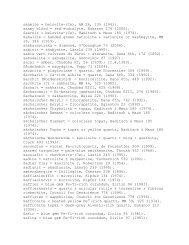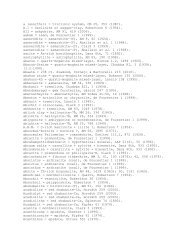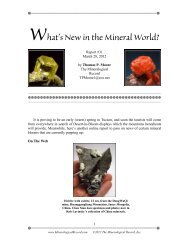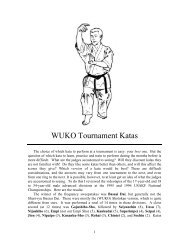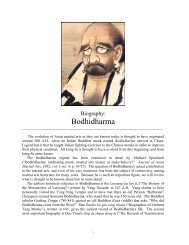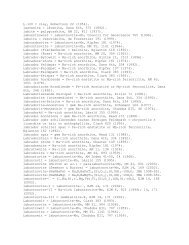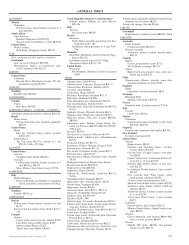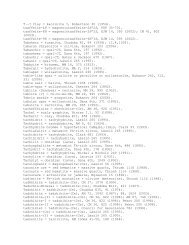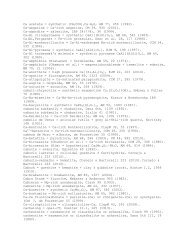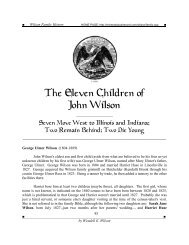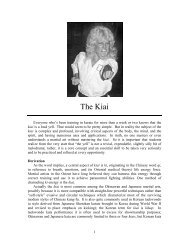Cuprian Elbaite - The Mineralogical Record
Cuprian Elbaite - The Mineralogical Record
Cuprian Elbaite - The Mineralogical Record
You also want an ePaper? Increase the reach of your titles
YUMPU automatically turns print PDFs into web optimized ePapers that Google loves.
132<br />
Figure 7. Across-section of one of the pegmatite<br />
veins visible in the roof of a tunnel at the<br />
Batalha mine. Brendan Laurs photo.<br />
Figure 8. <strong>Cuprian</strong> elbaite, 3.3 cm, from the<br />
Batalha mine (ca. 1989). Brian Cook specimen;<br />
Wendell Wilson photo.<br />
occurrence near Nova Palmeira, in the scheelite skarns of Currais<br />
Novos, and very near the Capoeira/Boqueirãozinho pegmatite (see<br />
Falster et al., 2000, and the article on the latter occurrence by<br />
Robinson and Wegner, 1998). Other metallic elements which have<br />
also been found locally in pegmatites (U, W, Ta, Sn, Nb, Mn) have<br />
been perceived by some authors to be arrayed in broad concentric<br />
zones radiating outward from the center of the pegmatite field, the<br />
copper-containing tourmaline band being parallel to these zones<br />
and therefore presumably genetically related to the core pluton<br />
(Cook and Barbosa, 1999); this theory still requires confirmation.<br />
MINERALOGY<br />
Batalha-mine cuprian elbaite occurs in a range of rich colors,<br />
from yellow-green to emerald-green, blue-green, turquoise-blue,<br />
tanzanite-blue, sapphire-blue, “electric” blue, bluish purple, purple,<br />
purplish pink, pink and gray—each color valued differently by the<br />
gem market. Many individual crystals are concentrically zoned in<br />
several colors. High concentrations of copper (1.5 to 2.3 weight %<br />
CuO) plus some manganese are responsible for the turquoise-blue<br />
color, whereas lower copper (< 0.6 wt.%) in the presence of<br />
manganese results in the purple color. Low manganese (< 0.1 wt.%)<br />
and high copper produce a green color. Pleochroism is usually<br />
distinct, from medium blue to pale greenish blue. <strong>The</strong> highest<br />
concentration of manganese (2.99 wt.% MnO) was found in a<br />
greenish gray crystal. Some colors are produced or enhanced by<br />
heat treatment, such treatment not always being determinable after<br />
the fact.<br />
Indices of refraction are typical of elbaite (1.618–1.612 and<br />
1.638–1.646); specific gravity (3.03–3.12) is slightly higher than<br />
usual. <strong>The</strong> crystals are unresponsive to longwave and shortwave<br />
ultraviolet light. <strong>The</strong> X-ray diffraction pattern is closely similar to<br />
that of standard elbaite, yielding a unit cell of a = 15.883 and c =<br />
7.111 Å.<br />
Numerous yellowish specks have been found included in some<br />
crystals; X-ray fluorescence analysis indicated the presence of Mn,<br />
Fe, Cu, Zn, Bi and S, suggesting a complex sulfide. However,<br />
Brandstätter and Niedermayr (1993, 1994) investigated the metallic<br />
<strong>The</strong> <strong>Mineralogical</strong> <strong>Record</strong>, volume 33, March–April, 2002



